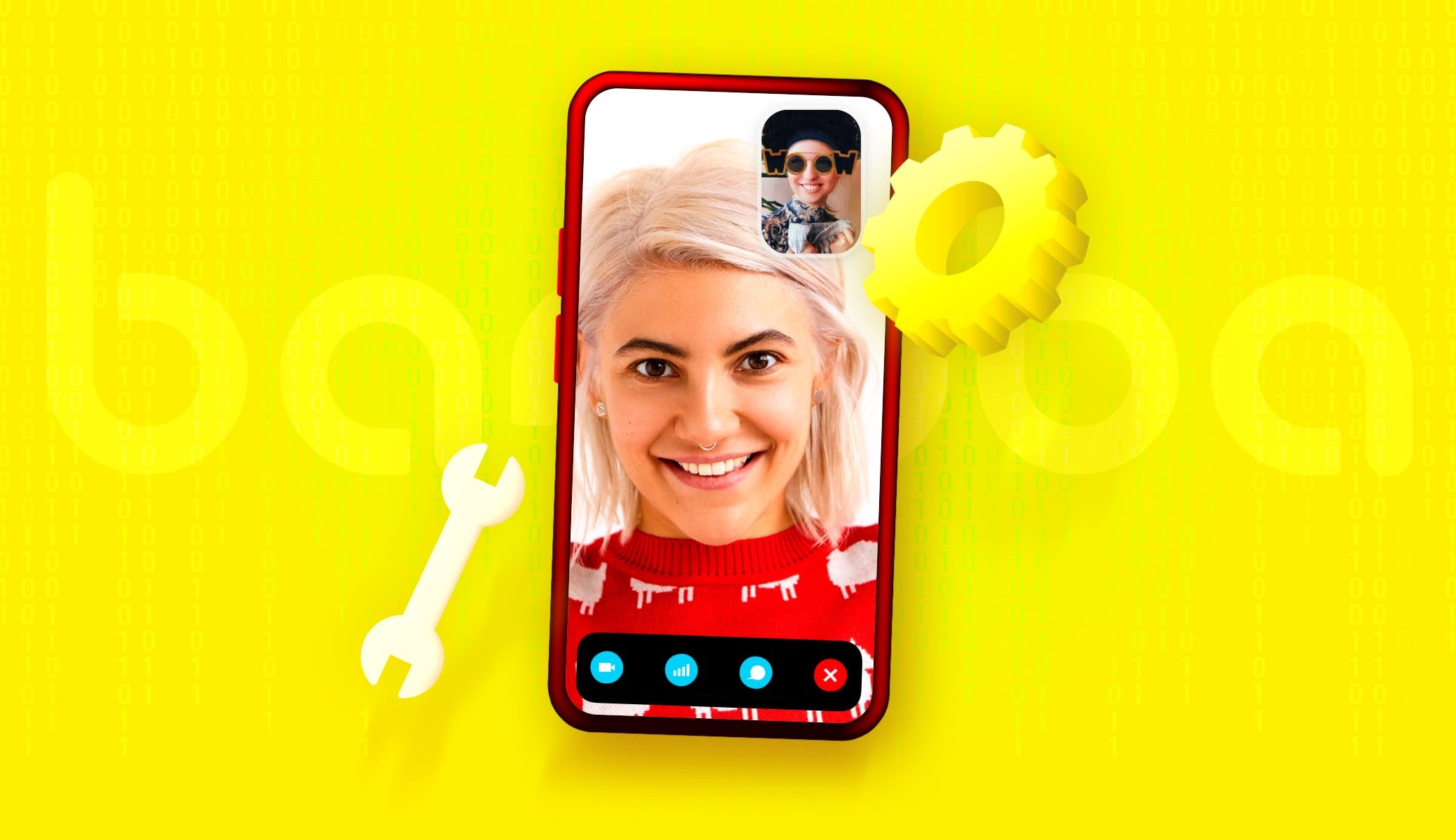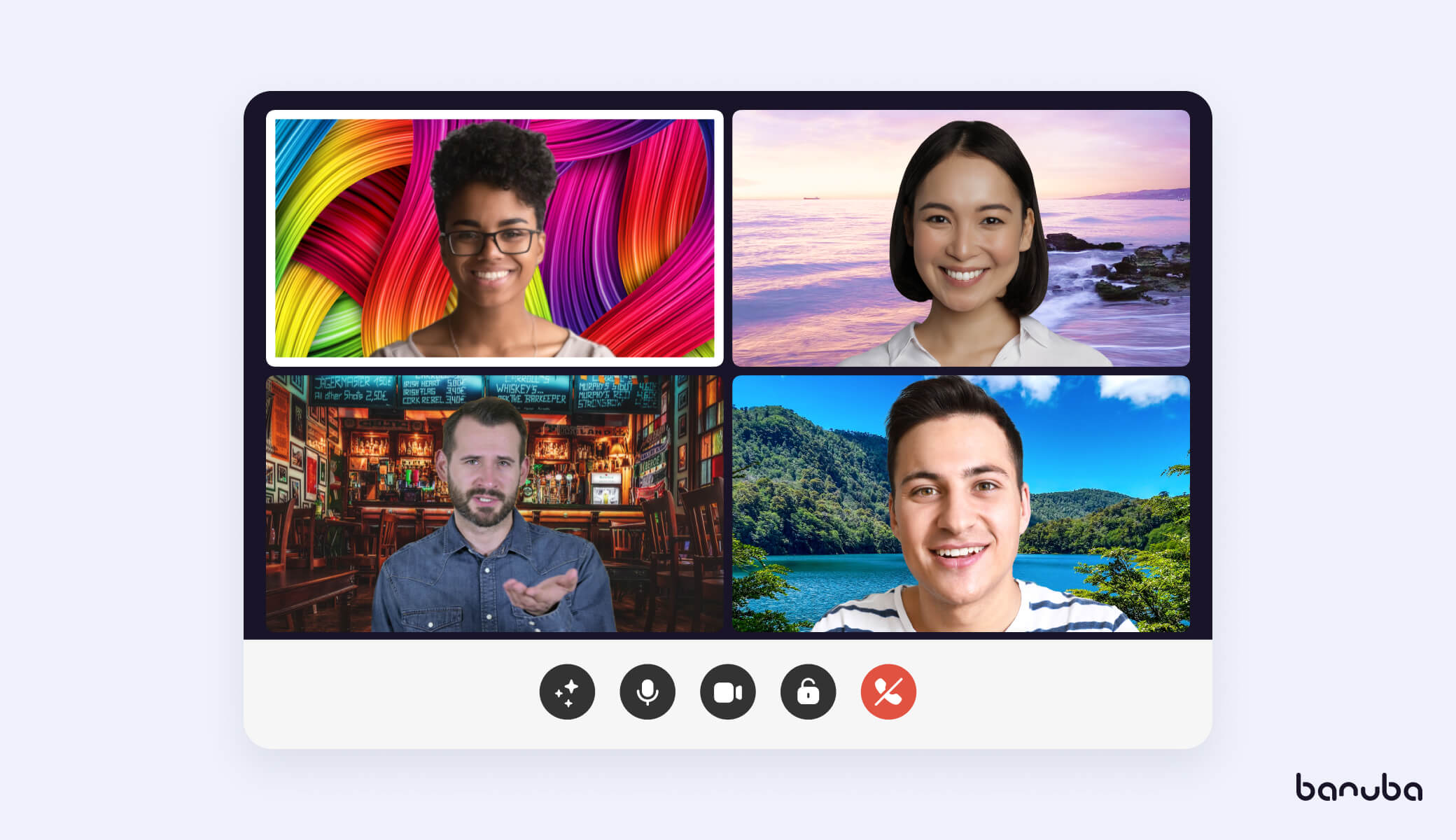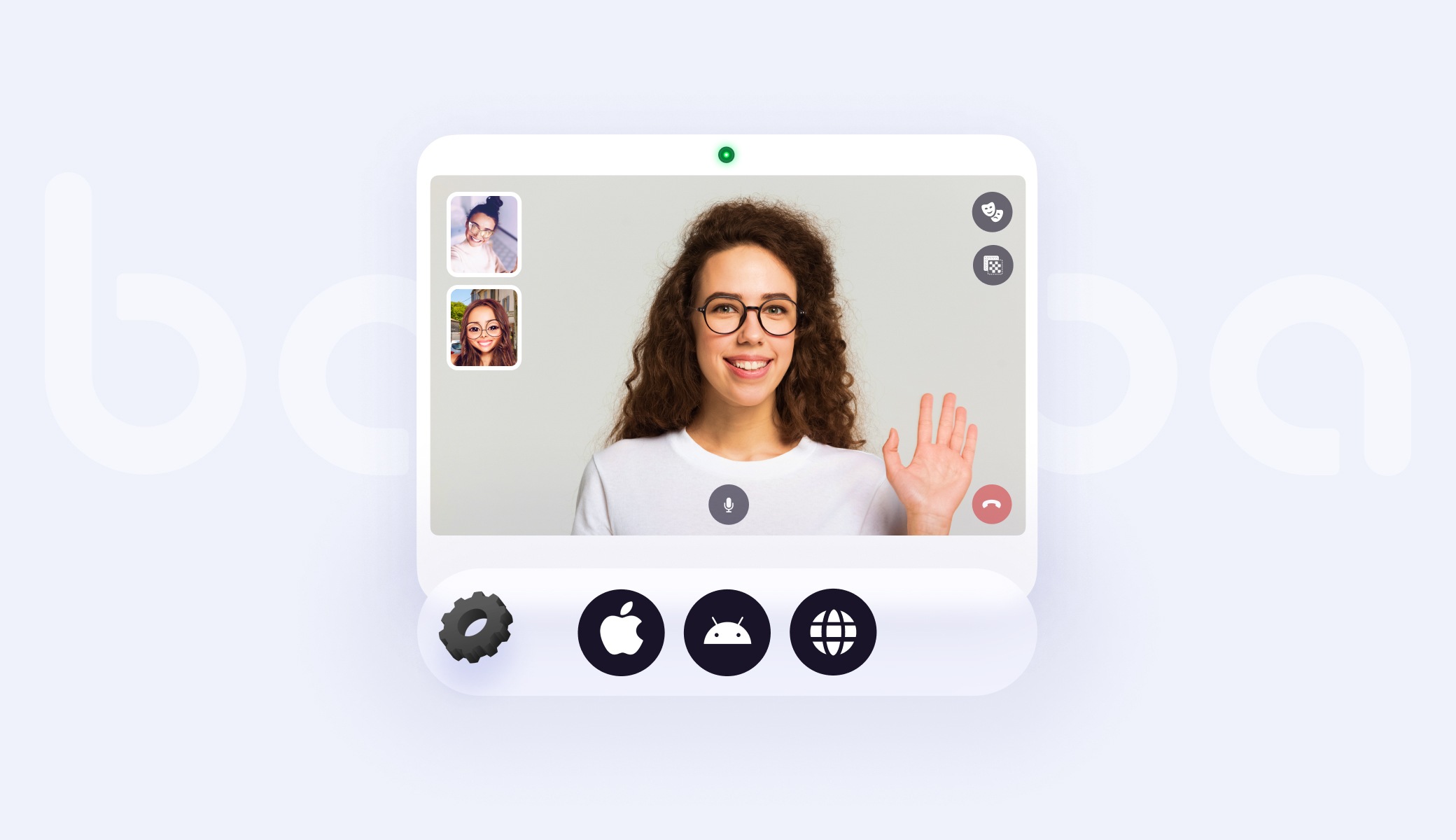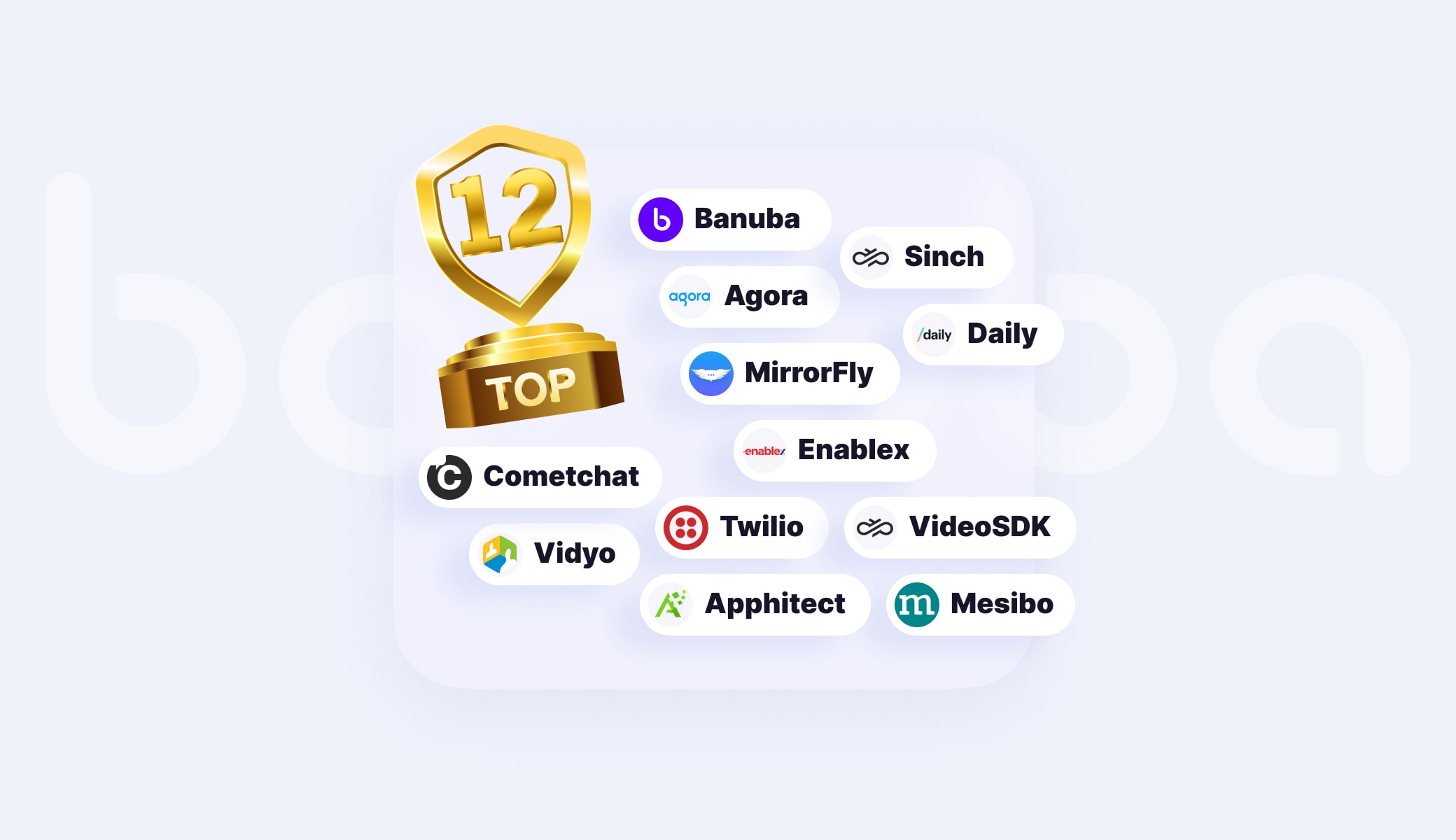Here’s How To Approach AR Video Chat Development
With the trends favoring remote communication and work, video chat apps gain more prominence and market share. In this article, we will give you a glimpse of these trends and some advice on how to approach the development of your own video chap app.


The COVID-19 pandemic has drastically affected our everyday lives, with more and more interactions being handled via remote communication. According to Reuters, video-conference app downloads have risen approximately fivefold between January and March 2020. This was a total increase from 1.4 million to 6.7 million users per week, which reflects the overall increased demand for video chat and video-conferencing apps globally.
Source: Statista
The preconditions for the growth in popularity of video communication had already existed before the global health crisis. Computerworld reports that, before the pandemic, employees spent an average of 11.7 hours per week in online meetings; nine percent of workers were already spending more than 20 hours in weekly meetings.
Video communication software powered by augmented reality (AR) features, such as Spatial and Rumii, has also been in high demand. Spatial CEO stated that the total amount of service requests increased by 400% in February of 2020, with a 50% increase in app usage during the first week of March. Meanwhile, the global market size of mobile AR has reached $8.9 billion, with a total of 810 million users worldwide in 2021.
Approximately 60% of users surveyed by Zoom stated that they would benefit from using AR in their meetings. Not surprisingly, AR features such as face beautification, make-up filters, virtual backgrounds, animated avatars, 3D models, and similar digital solutions in video chats have become popular as many people across the world continue working from their homes.
In this article, we will discuss the benefits of AR features in video chat interactions and the challenges associated with AR video chat app development.
Augmented reality video chat apps empower both users and brands
The benefits of augmented reality video chats and video conferencing software are many, as these apps extend communication beyond text and audio. Video chat apps are used for business meetings, collective workouts, remote parties, group learning, and simply to stay in touch with others. Video chats have become an important part of our daily lives but there is more to them than just establishing visual contact.
Augmented reality allows us to broaden the ways we communicate online, with things like face filters, virtual backgrounds, and 3D avatars. People use AR either for fun or to modify their face and background when they work from home or in public spaces.
Source: Funart (a scene from The Mask)
This, however, is just the tip of the iceberg. AR features in video chats are heavily used in marketing, customer support, gaming, and other areas. According to The Atlantic, the use of augmented reality has recently been on the rise for virtual make-up, fashion, and interior design. Introducing such features enabled brands to benefit from AR even before the pandemic began.
For example, L’Oreal reported a 49% increase in sales in 2019 after its customers got the opportunity to try products using augmented reality prior to making a purchase. This trend goes beyond cosmetics and fashion industries, with such companies as Acquire (a Canadian car dealership) using AR-powered tools for connecting with its customers and giving them vehicle walkarounds via video chat.
The potential of AR for business and marketing is enormous: the market will grow at a rate of 42.2% up to 2025, according to UC Today. The number of total AR-powered mobile app installs could reach 5 billion by 2022. Moreover, 32% of all consumers already use augmented reality and 53% plan to use it in the near future. As a result, the expected AR revenues could reach a total of $27.4 billion by 2023, according to ARtillery.
Source: ARtillery
An initial step in the AR video chat development is figuring out what type of app is required
As the mobile AR market grows, the demand for video chat apps supporting augmented reality for both Android and iPhone is also growing. Mobile developers specializing in AR video chats offer a variety of tools, such as Face Filters Software Development Kit (SDK) or Video Editor SDK, which allow users to create their own AR features.
When it comes to video chat app development, it is important to choose the right app type depending on your needs. One way to think about the video chat app types is to distinguish between a conferencing app, everyday conversation app, and entertainment app.
Video conferencing apps, such as Skype or Zoom, allow simultaneous group communication for business meetings, classes, and other events. Everyday conversation apps, like WhatsApp or Viber, allow one-on-one and small group interactions but are not suited for conference calls. Entertainment apps, such as Discord or Houseparty, allow multiparty interactions during online gaming or have in-built games that the participants can play together using the app.
Another way to think about video chat app types is to approach them from the business perspective. You can separate them into conferencing apps, online retailer apps, and enterprise platform apps.
Source: Hackernoon
Online retailer video chat apps could enhance the customer experience of e-commerce platform visitors. This is done by incorporating AR features, such as virtual make-up, virtual clothes fitting, or augmented reality-powered product demonstration. A good example is the IKEA catalog that allowed users to preview how a piece of furniture would look in their house.
Enterprise platforms, such as Spatial or MeetinVR, incorporate social platforms and video chat experiences for group collaboration. For example, Spatial allows 3D avatars to be projected into a virtual meeting space where the participants can perform a variety of simultaneous collective activities. Such apps allow notes and meeting-related materials to be shared in a single virtual space, and even allows avatars to shake hands, creating a feeling of personal presence.
AR video chat SDKs save time and resources, while app development from scratch gives more flexibility
Once you decide what kind of AR video chat app you need, you could either develop a custom app completely from scratch or use a variety of SDKs available on the market.
Custom app development allows for more flexibility in terms of unique features and user experiences that could become significant competitive advantages. This approach, however, requires more time, effort, and funding because the code for each app feature has to be written from scratch.
Another option is to use existing SDKs. An SDK contains premade pieces of code, graphical and layout elements, debuggers, and Application Programming Interface (API). By combining all these elements together, an app or specific features can be easily built.
A good example is Chingari, which integrated AI Video Editing SDK from Banuba to enable augmented reality features, such as virtual masks, beautification, and animation effects for video creation and editing. Chingari is currently the most popular video-sharing social networking app in India, with more than 30 million downloads as of September 2020.
SDKs offer less flexibility but add security, save time and effort, and, in many cases, are cheaper than custom app development from scratch. Another benefit of using SDKs is that they are constantly enhanced to make the development process more convenient and the app feature update less cumbersome.
Conclusion: augmented reality is becoming a must-have in business, communication, and entertainment
Current market trends indicate that the demand for AR-powered video chat applications for communication, business, and entertainment is on the rise. In part, this is the result of the COVID-19 pandemic that expedited the switch to remote communication and virtual collaboration tools, such as conferencing and enterprise video chat apps.
However, the preconditions for this trend already existed before the pandemic; brands and social media platforms were introducing face filters, 3D models and avatars, and virtual product demonstrations for more immersed and interactive user experiences.
Companies can benefit from this market trend by adding AR features to their applications. Depending on the app type, budget, and the resources available, they could either develop a custom app from scratch or use premade SDKs, such as Face Filters SDK or Video Editor SDK, which can be integrated into new or existing products.
While custom app development from scratch allows for more flexibility, SDKs improve security and save time and money as they provide ready-to-use tools and development environments for the creation of AR products. Feel free to start by trying out our video editor SDK at no charge.



